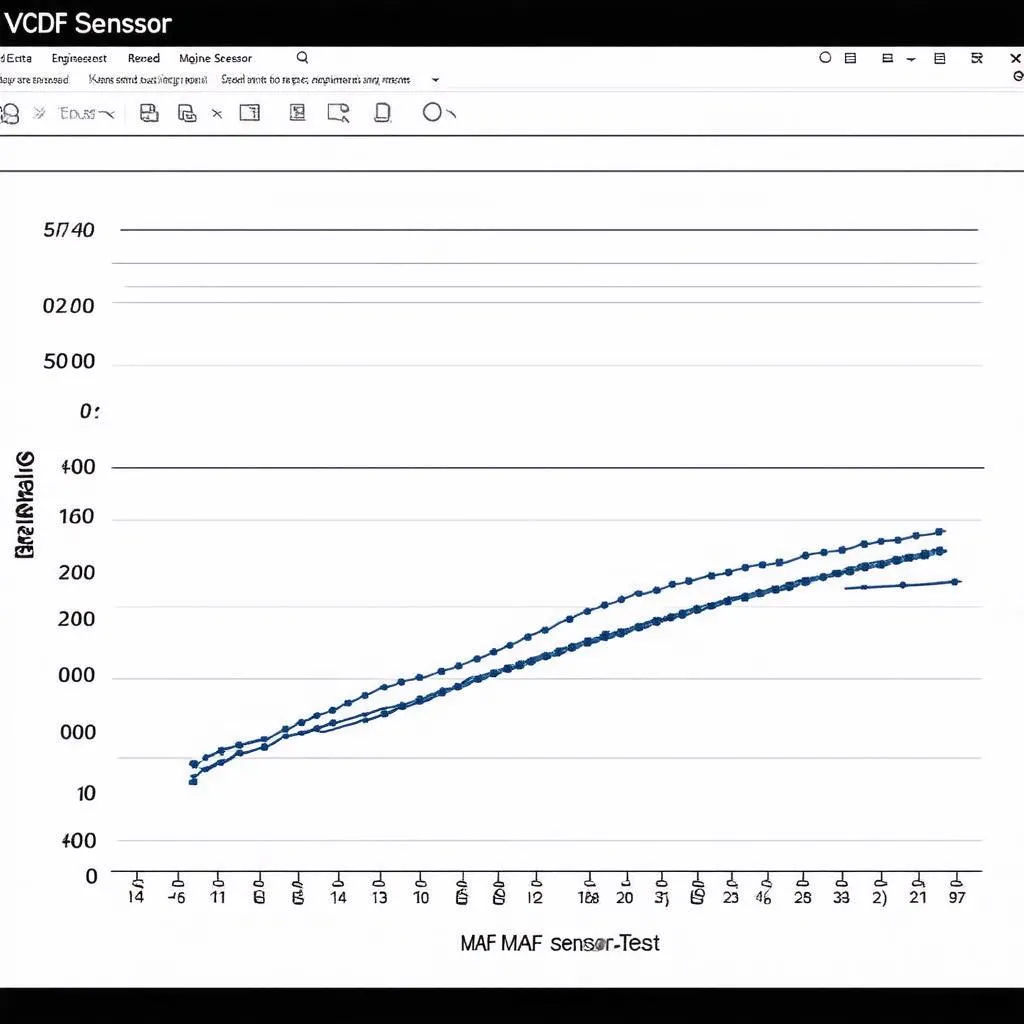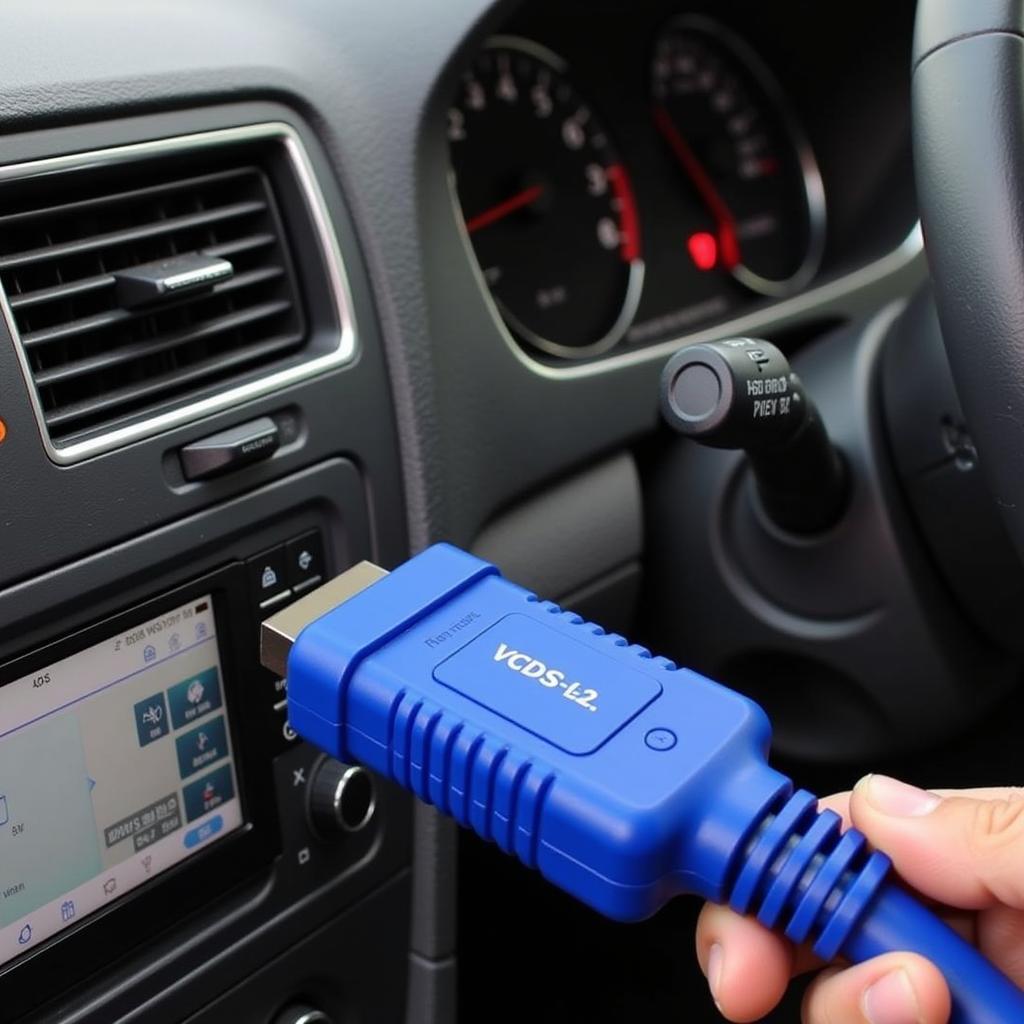The Mass Air Flow (MAF) sensor plays a critical role in your car’s engine performance. It measures the amount of air entering the engine, allowing the Engine Control Unit (ECU) to calculate the optimal fuel-to-air ratio for combustion. A faulty MAF sensor can lead to a range of performance issues, from reduced fuel economy to engine stalling. This is where the VCDS MAF test comes in.
What is a VCDS MAF Test?
VCDS, or Vag-Com Diagnostic System, is a powerful diagnostic software used by professionals and enthusiasts alike to troubleshoot issues in Volkswagen Audi Group (VAG) vehicles. Among its many features is the ability to perform a VCDS MAF test. This test allows you to monitor the MAF sensor’s readings in real-time, helping you determine if it’s functioning correctly or needs replacement.
How to Perform a VCDS MAF Test
Performing a VCDS MAF test is a relatively straightforward process, even for those new to automotive diagnostics. Here’s a step-by-step guide:
- Connect your VCDS interface to your car’s OBD-II port.
- Turn on the ignition but don’t start the engine.
- Launch the VCDS software on your computer.
- Select “Select Control Module”.
- Choose “Engine” from the list of modules.
- Go to “Measuring Blocks” or “Advanced Measurement Values”.
- Locate the measuring block that displays the MAF sensor readings. This is usually labeled as “MAF (Actual)” or similar.
While observing the live data, you can perform several checks:
- Check for plausible readings at idle. The MAF value at idle should typically fall within a specific range for your engine. Refer to your vehicle’s service manual for the expected values.
- Rev the engine and observe the MAF readings. As you increase the engine speed, the MAF readings should increase proportionally with the airflow.
- Compare the actual MAF values to the specified values. Any significant deviations could indicate a problem with the sensor.
Interpreting the VCDS MAF Test Results
Analyzing the data from your VCDS MAF test is crucial to pinpointing the issue. Here’s what to look out for:
- Low MAF readings at idle: This could indicate a clogged air filter, vacuum leak, or a failing MAF sensor.
- Fluctuating MAF readings: This could point to a wiring issue with the MAF sensor or a problem with the sensor itself.
- No MAF readings: This usually signals a complete failure of the MAF sensor or a wiring problem.
“It’s important to remember that the MAF sensor is just one piece of the puzzle,” says automotive expert, John Miller, author of “Advanced Automotive Diagnostics.” “Always cross-reference your findings with other diagnostic tests and consider the overall health of your engine before replacing any components.”
 VCDS MAF test graph showing normal readings
VCDS MAF test graph showing normal readings
Advantages of Using VCDS for MAF Testing
While there are other diagnostic tools available, VCDS offers several advantages for MAF testing:
- Accuracy: VCDS provides highly accurate real-time data directly from the vehicle’s ECU, ensuring reliable diagnostic results.
- Detailed Information: Unlike generic OBD-II scanners, VCDS offers in-depth data and specific measuring blocks for a comprehensive analysis of your MAF sensor.
- Cost-Effective: Investing in a VCDS system can save you money in the long run by allowing you to diagnose and potentially fix issues yourself.
 Mechanic connecting VCDS interface to a car
Mechanic connecting VCDS interface to a car
Common Questions about VCDS MAF Test
Q: Can I clean my MAF sensor?
A: Yes, you can try cleaning your MAF sensor with a specialized MAF sensor cleaner. However, if cleaning doesn’t improve the readings, you’ll likely need a replacement.
Q: What happens if I drive with a bad MAF sensor?
A: Driving with a faulty MAF sensor can lead to reduced fuel economy, poor engine performance, and potential damage to other engine components.
Q: Where can I purchase a genuine VCDS system?
A: You can purchase genuine VCDS systems from authorized dealers like Cardiagtech, ensuring you receive a high-quality product and reliable support.
Conclusion
The VCDS MAF test is an invaluable tool for diagnosing MAF sensor issues in VAG vehicles. By understanding how to perform the test and interpret the results, you can identify and address airflow problems that affect your engine’s performance. If you’re experiencing any of the symptoms mentioned above, consider running a VCDS MAF test. For further assistance and to explore a range of automotive diagnostic products, visit CARDIAGTECH.

